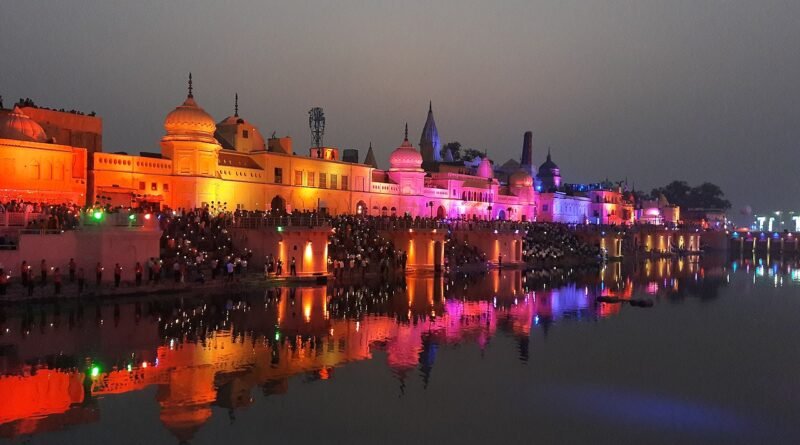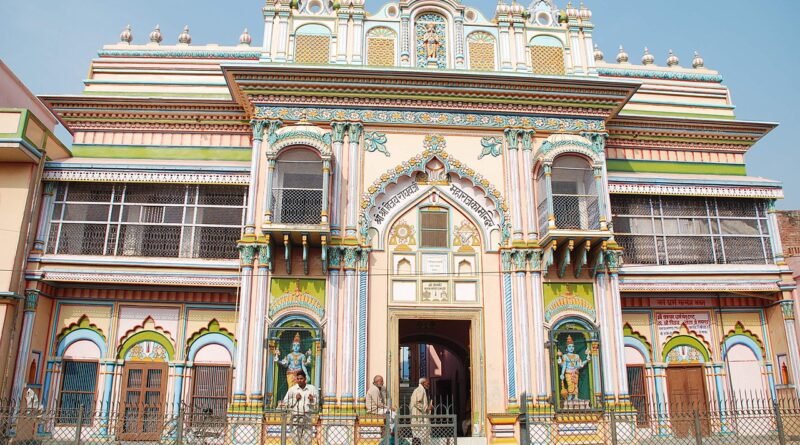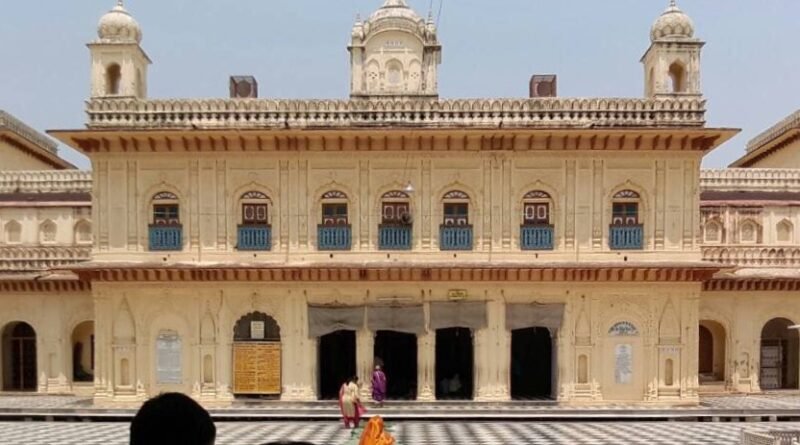Ayodhya
Ayodhya is a city situated on the banks of the Sarayu river in the Indian state of Uttar Pradesh. It is the administrative headquarters of the Ayodhya district as well as the Ayodhya division of Uttar Pradesh, India.Ayodhya city is administered by the Ayodhya Municipal Corporation, the governing civic body of the city.
Ayodhya was historically known as Saketa. The early Buddhist and Jain canonical texts mention that the religious leaders Gautama Buddha and Mahavira visited and lived in the city. The Jain texts also describe it as the birthplace of five tirthankaras namely, Rishabhanatha, Ajitanatha, Abhinandananatha, Sumatinath and Anantnath, and associate it with the legendary Bharata Chakravarti. From the Gupta period onwards, several sources mention Ayodhya and Saketa as the name of the same city.
The legendary city of Ayodhya, popularly identified as the present-day Ayodhya, is the birthplace of the Hindu deity Rama of Kosala and setting of the great epic Ramayana and its many versions. Owing to the belief as the birthplace of Rama, Ayodhya has been regarded as the first of the seven most important pilgrimage sites for Hindus. It is believed that a temple stood at the supposed birth spot of Rama, which was demolished by the orders of either the Mughal emperor Babur or Aurangzeb, and a mosque erected in its place. In 1992, the dispute over the spot led to the demolition of the mosque by Hindu mobs, who aimed to rebuild a grand temple of Rama at the site.A five-judge full bench of the Supreme Court heard the title cases from August to October 2019 and ruled that the land belonged to the government per tax records, and ordered it to be handed over to a trust to build a Hindu temple. It also ordered the government to give an alternative 5 acres (2.0 ha) of land to the Uttar Pradesh Sunni Central Waqf Board to build a mosque in lieu of the demolished Babri mosque. The construction of Ram Mandir commenced in August 2020.
History
Ancient Indian Sanskrit-language epics, such as the Ramayana and the Mahabharata mention a legendary city called Ayodhya, which was the capital of the legendary Ikshvaku kings of Kosala, including Rama.Neither these texts, nor the earlier Sanskrit texts such as the Vedas, mention a city called Saketa. Non-religious, non-legendary ancient Sanskrit texts, such as Panini’s Ashtadhyayi and Patanjali’s commentary on it, do mention Saketa.
The later Buddhist text Mahavastu describes Saketa as the seat of the Ikshvaku king Sujata, whose descendants established the Shakya capital Kapilavastu.
The earliest of the Buddhist Pali-language texts and the Jain Prakrit-language texts mention a city called Saketa (Sageya or Saeya in Prakrit) as an important city of the Kosala mahajanapada.Topographical indications in both Buddhist and Jain texts suggest that Saketa is the same as the present-day Ayodhya. For example, according to the Samyutta Nikaya and the Vinaya Pitaka, Saketa was located at a distance of six yojanas from Shravasti. The Vinaya Pitaka mentions that a big river was located between the two cities, and the Sutta Nipata mentions Saketa as the first halting place on the southward road from Shravasti to Pratishthana.Fourth century onwards, multiple texts, including Kalidasa’s Raghuvamsha, mention Ayodhya as another name for Saketa.The later Jain canonical text Jambudvipa-Pannati describes a city called Viniya (or Vinita) as the birthplace of Lord Rishabhanatha, and associates this city with Bharata Chakravartin; the Kalpa-Sutra describes Ikkhagabhumi as the birthplace of Rishabhadev. The index on the Jain text Paumachariya clarifies that Aojjha (Aodhya), Kosala-puri (“Kosala city”), Viniya, and Saeya (Saketa) are synonyms. The post-Canonical Jain texts also mention “Aojjha”; for example, the Avassagacurni describes it as the principal city of Kosala, while the Avassaganijjutti names it as the capital of Sagara Chakravartin.The Avassaganijjutti implies that Viniya (“Vinia”), Kosalapuri (“Kosalapura”), and Ikkhagabhumi were distinct cities, naming them as the capitals of Abhinamdana, Sumai, and Usabha respectively. Abhayadeva’s commentary on the Thana Sutta, another post-canonical text, identifies Saketa, Ayodhya, and Vinita as one city.According to one theory, the legendary Ayodhya city is the same as the historical city of Saketa and the present-day Ayodhya. According to another theory, the legendary Ayodhya is a mythical city,Alternative, but less likely, theories state that Saketa and Ayodhya were two adjoining cities, or that Ayodhya was a locality within the Saketa city. and the name “Ayodhya” came to be used for the Saketa (present-day Ayodhya) only around the fourth century, when a Gupta emperor (probably Skandagupta) moved his capital to Saketa, and renamed it to Ayodhya after the legendary city.
















